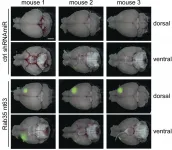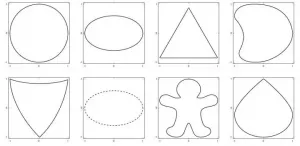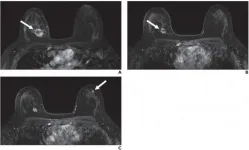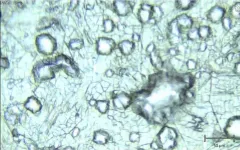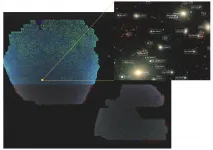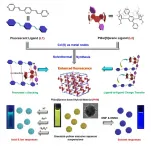Bladder cancer -- When to use chemotherapy
An analysis of immune status to predict treatment success
2021-01-14
(Press-News.org) In patients with bladder cancer, chemotherapy effectiveness is partially determined by the body's immune system response to the malignancy. This is the conclusion of research conducted by a team of scientists from Charité - Universitätsmedizin Berlin and the Berlin Institute of Health. The findings, which have been published in Science Translational Medicine*, can be used to predict treatment success and may increase survival in patients with bladder cancer.
Bladder cancer is one of the ten most common types of cancer in Germany, and one of the five most common cancers in men. Nationwide, the disease affects approximately 30,000 people a year. The risk of the cancer spreading (metastasizing) is particularly high once it invades the muscle layer inside the bladder wall. In patients with non-metastatic muscle-invasive bladder cancer, treatment usually consists of the surgical removal of the bladder. According to current professional guidelines, patients must undergo chemotherapy prior to surgery; they receive drugs which will target the cancer's fast-growing cells. The aim of this 'neoadjuvant' chemotherapy is to shrink the tumor prior to surgery in order to reduce the risk of recurrence and/or metastases. However, in more than fifty percent of patients, chemotherapy will not shrink the tumor. Not only do these people not benefit from neoadjuvant chemotherapy, they are losing valuable time - time during which the cancer can continue to grow and metastasize.
An international team of researchers led by Dr. Michael Schmück-Henneresse, a scientist at the Berlin Institute of Health Center for Regenerative Therapies (BCRT) as well as Charité's Institute of Medical Immunology and the Berlin Center for Advanced Therapies (BeCAT), has discovered a way to differentiate between patients who will benefit from chemotherapy and those who will not. The status of the patients' immune systems before the start of treatment was found to hold the key. Subsequent chemotherapy only proved effective if the cancerous tissue contained large quantities of two specific immune system components known as CXCL11 and CXCR3alt. "The process of measuring these two components in the laboratory is relatively straightforward and only requires the biopsy sample which is collected in order to diagnose the cancer," says Dr. Schmück-Henneresse. "This technologically simple method will make it possible to predict the likelihood of chemotherapy success in a specific patient at the point of diagnosis. If neoadjuvant chemotherapy is unlikely to be successful, one could dispense with this therapy altogether and directly move to the bladder cancer's surgical removal. This type of personalized approach would not only spare patients the side effects of an ineffective treatment, it would probably increase their chances of survival. However, our results will need to be confirmed by further, independent studies before we can get to a stage where CXCL11 and CXCR3alt measurements become standard in patients with bladder cancer."
As part of this research, the team studied tumor samples from 20 patients with muscle-invasive bladder cancer who had completed their chemotherapy treatment at Umeå University in Sweden. Dating back to before the start of treatment, the samples had been collected by Dr. Amir Sherif and his team during diagnostic cytoscopy procedures. The research group identified which immunological messengers were present in the biopsy tissue and which receptors (effectively the 'recipients' of these messengers) the immune cells inside the tumors were producing. For each of the components identified, they then tested whether there was a link between the quantities at which these were present and treatment success. Results confirmed this was the case for both the messenger substance CXCL11 and the receptor CXCR3alt. Chemotherapy only had an effect if the immune cell attractant CXCL11 was present at particularly high levels inside the tumor tissue and if specific immune system cells known as T cells produced the corresponding CXCR3alt receptor. The team subsequently examined their observations using existing data from 'The Cancer Genome Atlas'. Their comparison confirmed that, out of a total of 68 patients with bladder cancer who had received chemotherapy, patients whose tumor tissue contained large quantities of CXCL11 were more likely to survive.
"The signaling molecule CXCL11 attracts specific T cells into the tumor tissue, where it prompts them to proliferate and fight the cancer," explains the study's first author, Tino Vollmer, a doctoral student at Charité's Institute of Medical Immunology and scientist at the BCRT and BeCAT. "Chemotherapy appears to support the body's own fight against the tumor, possibly because the resulting degradation of cancerous tissue makes it easier for T cells to invade it." The immune system's effect on treatment outcome directly contradicts established scientific consensus, which posits that the effect of chemotherapy drugs is solely due to the ability of cancer cells to divide and replicate. "Along with other studies, our research demonstrates the importance of the immune system's active involvement in fighting the tumor," says Vollmer.
As a next step, the researchers plan to study whether cell therapy could be used to activate the T cells of patients whose immune systems show a weak response to their bladder cancer. To do this, the team wants to harvest T cells from affected patients, fit them with synthetic CXCR3alt receptors in the laboratory, and then reintroduce them into these patients. The researchers will also study the same approach in relation to the treatment of other cancers. Furthermore, they plan to advance the use of personalized chemotherapy in patients with bladder cancer. To achieve this, the researchers intend to test the predictive power of both immune system components (CXCL11 and CXCR3alt) using a process known as 'predictive validation', which will involve the study of independent groups of patients with muscle-invasive bladder cancer at various European hospitals. "Should the method's predictive reliability be confirmed, the analysis of a patient's immune status could become a routine tool to support decision-making in the treatment of bladder cancer," says Dr. Schmück-Henneresse.
INFORMATION:
*Vollmer T et al., The intratumoral CXCR3 chemokine system is predictive of chemotherapy response in human bladder cancer. Sci Transl Med 2021 Jan 13. doi: 10.1126/scitranslmed.abb3735
[Attachments] See images for this press release:

ELSE PRESS RELEASES FROM THIS DATE:
2021-01-14
TAMPA, Fla. -- The hallmarks of cancer include rapid cell reproduction and metabolic activity. But these processes also lead to increased cellular stress and oxidation, and the risk of cell death. To circumvent these negative consequences of supercharged growth, cancer cells stimulate pathways to reduce oxidative stress and avoid cell death. In an article published in Cell Metabolism, Moffitt Cancer Center researchers report on a newly discovered biochemical pathway that protects cells from a type of cell death called ferroptosis.
Ferroptosis is a specialized type of cell death that is caused ...
2021-01-14
Scientists at the Walter Reed Army Institute for Research have shown that microRNA biomarkers related to Alzheimer's disease play a role in brain damage caused by traumatic brain injury.
TBI or brain trauma results from blows to the head, leading to chronic disruption of the brain and a cascade of long-term health conditions. Patients who suffer from TBI are at much higher risk of developing neurodegenerative disease or dementia, particularly Alzheimer's disease. The mechanism behind this relationship remains understudied, making the development effective therapeutics challenging.
MiRNAs are small pieces of genetic material that play a critical role in normal gene expression. Yet, studies have also linked abnormal miRNA levels, or dysregulation, to a range of diseases including neurodegenerative ...
2021-01-14
Recently, the research team led by academician GUO Guangcan from the University of Science and Technology of China of the Chinese Academy of Sciences has made security analysis and improvement of source independent quantum random number generators with imperfect devices.
By studying the actual characteristics of the measurement devices of the source-independent quantum random number generation, the researchers pointed out that the security issues were caused by afterpulse, detection efficiency mismatching, poor sensitivity to photon number distribution ...
2021-01-14
Researchers at McGill University have identified a new cellular pathway that limits the growth and spread of brain tumors by controlling the recycling of cell surface receptor proteins. The study, which will be published January 14 in the Journal of Cell Biology (JCB), suggests that the pathway, which involves a protein called Rab35, is defective in many patients with glioblastoma and that restoring Rab35's activity could be a new therapeutic strategy for this deadly form of brain cancer.
Glioblastoma is the most aggressive type of brain cancer, and because it is largely untreatable, the average patient dies within 14 months of diagnosis. Like in other cancers, the proliferation and spread of glioblastoma cells depends on various receptor proteins on the outside of the cell. The ...
2021-01-14
While humans may struggle to navigate a murky, turbid underwater environment, weakly electric fish can do so with ease. These aquatic animals are specially adapted to traverse obscured waters without relying on vision; instead, they sense their environment via electric fields. Now, researchers are attempting to adapt these electrosensing techniques to improve underwater robotics.
Scientists have spent years studying how weakly electric fish--including the knife fish and elephantnose fish--utilize electricity for navigation. These fish have specialized electric organs that discharge small voltages into the surrounding water, creating their own personal electric fields. Nearby objects cause slight disruptions to these fields, which the fish detect with sensitive organs ...
2021-01-14
There is a growing consensus among scientists as well as national and local governments representing hundreds of millions of people, that humanity faces a climate crisis that demands a crisis response. New research from the University of California San Diego explores one possible mode of response: a massively funded program to deploy direct air capture (DAC) systems that remove CO2 directly from the ambient air and sequester it safely underground.
The findings reveal such a program could reverse the rise in global temperature well before 2100, but only with immediate and sustained investments from governments and firms to scale up the new technology.
Despite the enormous undertaking explored in the study, the research also reveals the need ...
2021-01-14
Leesburg, VA, January 14, 2021--According to ARRS' American Journal of Roentgenology (AJR), new suspicious findings occurred in 5.5% of breast MRI examinations performed to monitor response to neoadjuvant therapy; none of these new lesions were malignant.
"Our findings suggest that new lesions that arise in the setting of neoadjuvant therapy are highly unlikely to represent a new site of malignancy, particularly if the index malignancy shows treatment response," wrote Donna A. Eckstein and colleagues in the department of radiology and biomedical imaging at the University of California, San Francisco.
Based on a presentation at the ARRS 2019 Annual Meeting, Honolulu, ...
2021-01-14
Scientists at the University of Tsukuba show that using a layer of graphene just one atom thick improves the catalytic activity of nickel or copper when generating hydrogen gas, which may lead to cheaper fuel for zero-emission automobiles
Tsukuba, Japan - A team of researchers led by the Institute of Applied Physics at the University of Tsukuba has demonstrated a method for producing acid-resistant catalysts by covering them with layers of graphene. They show that using few layers allows for greater proton penetration during a hydrogen evolution reaction, which is crucial for maximizing ...
2021-01-14
The Beijing-Arizona Sky Survey (BASS) team of National Astronomical Observatories of Chinese Academy of Sciences (NAOC) and their collaborators of the Dark Energy Spectroscopic Instrument (DESI) project released a giant 2D map of the universe, which paves the way for the upcoming new-generation dark energy spectroscopic survey.
Modern astronomical observations reveal that the universe is expanding and appears to be accelerating. The power driving the expansion of the universe is called dark energy by astronomers. The dark energy is still a mystery and accounts for about 68% of the substance ...
2021-01-14
Organic luminescent materials have been highlighted as an exciting research topic owing to their prominent potentials in light-emitting diodes, fluorescent sensors, optoelectronic devices, in vivo imaging, anti-counterfeiting, data storage, and information encryption. However, applications of tunable fluorescent materials in the solid states have been largely hampered because these luminescent systems generally require time-consuming organic synthesis procedures and suffer from reduced photoluminescence (PL) owing to the notorious aggregation caused quenching. Aggregation-induced ...
LAST 30 PRESS RELEASES:
[Press-News.org] Bladder cancer -- When to use chemotherapy
An analysis of immune status to predict treatment success

